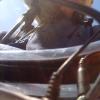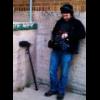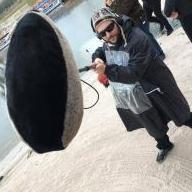All Activity
- Today
-

Introducing: WildTrax Recording Engine
Doc Justice replied to Doc Justice's topic in Manufacturers & Dealers
If you are deciding between an old Intel MacBook Pro and a new MacBook Air with Apple Silicon, get the Air. No question. WildTrax runs smoother, faster, and cooler on Apple Silicon. We have a version built just for it, and it takes full advantage of everything the chip can do. The Universal version works too, but if you are on M1, M2, M3, or M4, go with the native one. Old Intel machines are loud, hot, and chew through battery. The Air stays quiet, lasts all day, and handles WildTrax like it is nothing. You do not need a tank. You need something that gets the job done and does not get in your way. I have a Mac Studio M1 Max at the office, and an M4 MacBook Air for the road. I have no problem running the MacBook Air with hundreds of tracks for hours on end. I highly recommend it. - Yesterday
-
Any birders here? CMIT5U v Parabolic? Grad student
grawk replied to Goonie's topic in General Discussion
For recorders, if you're only utilizing 1 or 2 microphones, the new tascam FR-AV2 and the Zoom F3 are both really good, really small options. -
Re: Camera noise, custom made magazine dampers ("barnies") absolutely used to be a thing. And they did help, especially for high frequencies. They work better when custom-fitted and thick. Getting wardrobe to custom fit something made out of furnie pads is a great idea, especially if layered. Otherwise, you'd have to hope the production got one included with the rental.
-
If you haven't done a 16mm sync sound shoot before you will probably be surprised at how noisy "silent" 16mm cameras actually are. They were "silent" only in comparison to non-silent cameras (like Arri S, Bolex etc), they are still quite noisy, and this is when those cameras were brand new. Worn cameras become noisier, the worst were cameras bought (very) used by newbie DPs to shoot their first dramatic etc films (the cameras could be adjusted to be either be slightly quieter or have the most accurate registration possible, but not both at the same time). My diplomatic skills were on full display in advocating for an optical flat in front of the lens (the lens acts like a trumpet broadcasting the camera noise right at the actor) and some sort of blimp over the magazine (which was often the AC's jacket). On a few shoots the wardrobe people kindly cut up one of my furni pads and made us a mag-blimp for the camera. These solutions helped a little, but just a little. An upside of film shooting is that the director can't roll for hours at a time--the film runs out every 11 min (and you can put the boom down for a minute).
-
I have worked with film a few times now and generally relied heavily on the tc slate. Various levels of budget and resources. In order not to waste film, we’d get the slate in and roll sound, verbally ID the slate and then roll camera to immediately grab the sticks. if you can get a blimp for the camera I’d certainly recommend it, some models (even ARRIS) can be loud. When I worked with experienced ACs they knew which film mags were louder than others and we avoided them on intimate scenes. I hope you enjoy the experience!
-
I'd strongly advise to use a new internal SDcard and leave the original untouched.
-

What are you choices for low profile shoots on the go?
Ben B replied to Chad Peter's topic in Equipment
I shot a short film "undercover" in a Carnaval a few years ago. Everybody is dressed up in costumes and party in street all night long. The whole crew and cast was dressed up as well. I used lav only on the cast. Thanks to the costumes i could hide the lav in plain sight and got great dialogue. i had a MS rig in my hand to get as much sync ambiance as i could. The sound ambiance was pretty special there so it helped a lot to match the background in the edit. The camera was also hidden under a costume and nobody noticed anything (the alcohol helped as well i guess...). You could also rig every cast member with a Tentacle trackE or similar and have some sort of small stereo mic rig on you for maximum low profile. -

First shoot with 16mm film... what do I need to know?
Ben B replied to LDstudios's topic in Cameras... love them, hate them
I shot a feature on the Arriflex 416 a few years ago. We had a timecode slate and that was basically it. We had one small SD video feed for the script and director but i basically mixed the whole film without picture. We didn't have any video recorder so no playback was possible but i guess if you have one i'd send a scratch track to the video recorder so they can playback a take with sound. Make sure not to miss the slate call and to slate every shot obviously but otherwise, in my experience, it was pretty straight forward. The camera is pretty quiet for a film camera but i still heard it on quiet scene. There's not much you can do about that. -

What are you choices for low profile shoots on the go?
Olle Sjostrom replied to Chad Peter's topic in Equipment
If id ever attempt such a thing I THINK id go for lavs only, prep the actors far in advance, make sure they sound good, record on the txs and have my small Nova, or similar, rig either visible or not, like in a backpack. I guess that depends on the level of stealth though. A boom is great of course, but sometimes it's just in the way. Especially if you're trying to be unintrusive. One time I filmed a scene in a park that needed to be on the low. So I just gave up on the boom, got the time to really get the lavs to work and was allowed that time. I sat on a bench with headphones on, all the gear in a backpack and just let that roll. I mixed using the app basically, occasionally I reached down in the bag to adjust some things. I just looked like a dude with a phone and headphones sitting on a bench with some weird bag and another guy with a monitor and follow focus next to him. No one cared... no one cared about the dude with a camera filming two actors arguing over and over again. This was 9 years ago so gear is smaller now. Video village were in a car on the sidewalk. -
Thanks for the reply! It is well timed with a meeting I just had. Camera/sound/processing/post sync tests have all come up successful at matching frame rates. They are running a video assist, but the recorder has no TC or audio input. I've offered, but they said they're happy to sync it in post too. Copy, copy on the slate calls. Dedicated slate mic added to the list. Thanks again!
-
Chad Peter started following What are you choices for low profile shoots on the go?
-
Not that I'd ever attempt such a thing... I blinked and the past five years flew by. I'm about to jump on a plane and shoot a low-profile feature in Europe. Last time I did this was in Australia, and setting up cameras / getting the boom out wasn't as big a deal in the wide-open outback space - but this time we'll be "stealing" a few scenes in some busier locations and I'd like as little a footprint as possible. Feels like technology has advanced about twenty years in the past five - how would you approach this type of shoot? Curious what everyone's go to would be. --Chad
-
Talk to post, make sure they are expecting TC frame rate to match. There are some circumstances where you'll use a different frame rate than the camera is running at (mostly when shooting for NTSC TV). Also, if they are using video assist, you may need to run TC to the video recorder (if used for playback). There's lots of details about how it used to be done, but nobody remembers these days, so you need to talk through workflow with camera & post and make sure everyone is on the same page. And you'd better make sure all the slate calls are audible. Easy to get lazy, but now there's no crutch.
-
Hey all, For the first time in ~10 years of doing this, I've been booked on a 'film' shoot. I feel like I'm starting all over again! They are shooting on a 16mm ARRI with no timecode module. They tried getting it installed, but the round-the-world trip and logistics didn't pan out - timecode slate will be used. Is this as simple as it sounds? No sound to camera? No audio return? No playback of takes? Match the frame rate, jam the slate, and go? Things are never as simple as they seem - what am I missing here?
- Last week
-
imako started following Aeta Systems 4MINX
-
Derek H started following VDB Finger Control Surface experience?
-
Looks pretty great. Only miss I see is they forgot to put PFL LED meters on each channel. And a couple mix bus meters would be nice too but I’d say the PFL meters like the cl12 and Sonosax has are really great to have.
-
-
Iceman v1.0 - Windows Based 788T Control Software (replacing Goose)
Amir Shmueli replied to jawharp's topic in Equipment
This is Amazing news. Is it possible on Tablet ? And if so, Is it possible also on Android ? Thanks Amir -
Paul Holzman joined the community
-
Has anybody laid hands on the fader controller from VDB? The FCS 8 and FCS12 claim to be well-built, so it seems like an interesting entry into this arena. Specifically, I'm wondering if anyone has hands-on experience with the "Soft" vs "Firm" faders that are available. I have read all the documentation I can find, but fader feel is such a subjective tactile experience, I don't really want to place an order based on the literature. Sometime soon, I will likely contact VDB directly (tip of the HAT). I'll report back if I learn useful info. Thanks, Brian
-

Hey what’s everybody’s favorite AA rechargeable?
Matt Mayer replied to Izen Ears's topic in Equipment
To add another data point: I picked up a set of 8 and the BC-8 charger a few weeks ago. Working with them in DCHR and M2Ra RX. Got 5 - 5.5 hours run time to the flashing red battery indicator. Was in the middle of a shoot so just changed them out, didn't wait to find out how long they ran after battery warn. No noticeable RF interference showing on the RF meter on the units. -
Hello, Long time user of a Cantar X-1. Having some trouble with the triple crown wheel. Selection of parameters is jumpy when rotating the inner wheel. Would like to disassemble and clean. Any leads or experience from fellow members? Thanks...
-
imako joined the community
-
Hello ! I came here looking for help as my 4mix sometimes freezes when I boot it. I read that some of you managed to restore the system on the sd card from a backup ? I know this thread is getting old but would warmly welcome any help 🙂 don't hesitate to send me an mp
-
amazing FUCKIN find…. https://youtube.com/watch?v=mZmJ3Q7SfHE
-
Any birders here? CMIT5U v Parabolic? Grad student
The Immoral Mr Teas replied to Goonie's topic in General Discussion
I'll look forward to listening to this, thanks Jason. (And good links and advice...) I don't know what is meant by 'og blimp' but perhaps others do and I'm just old fashioned ... You don't mention parabolic reflectors (or mic systems) in your post but it's there in the title - so - I'll agree with Jason with different mics for different purposes. So what you will be doing 'every single day' ought to have the best measurement / capture device or devices for the task. That said, I have a parabola and two excellent repurposed bags to carry it .. but I would never call that gear's footprint minimal in any way. I've never taken it anywhere remotely remote. What I might consider as an addition/alternative to the CMIT would be an omni - or perhaps two, for stereo (and for the pleasure of others listening to the recordings of what you're hearing in the field). Rest of your life? PNW is Pacific Northwest (at first I read it as Papua New Guinea...)? Must be an enticing place. Jez -

Introducing: WildTrax Recording Engine
Johnny Karlsson replied to Doc Justice's topic in Manufacturers & Dealers
FWIW, I'm on an M2 MacBook Air since when they were first released, and I can say that it's plenty more capable than the (bigger and heavier) Intel MacBook Pro that I previously had. Chip: Apple M2 Number of Cores: 8 (4 performance and 4 efficiency) Memory: 24 GB









